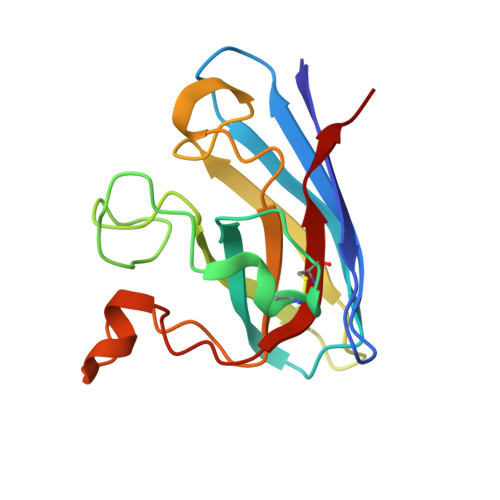Variable Metallation of Human Superoxide Dismutase: Atomic Resolution Crystal Structures of Cu-Zn, Zn-Zn and as-Isolated Wild-Type Enzymes.
Strange, R.W., Antonyuk, S.V., Hough, M.A., Doucette, P.A., Valentine, J.S., Hasnain, S.S.(2006) J Mol Biol 356: 1152
- PubMed: 16406071
- DOI: https://doi.org/10.1016/j.jmb.2005.11.081
- Primary Citation of Related Structures:
2C9S, 2C9U, 2C9V - PubMed Abstract:
Human Cu-Zn superoxide dismutase (SOD1) protects cells from the effects of oxidative stress. Mutations in SOD1 are linked to the familial form of amyotrophic lateral sclerosis. Several hypotheses for their toxicity involve the mis-metallation of the enzyme. We present atomic-resolution crystal structures and biophysical data for human SOD1 in three metallation states: Zn-Zn, Cu-Zn and as-isolated. These data represent the first atomic-resolution structures for human SOD1, the first structure of a reduced SOD1, and the first structure of a fully Zn-substituted SOD1 enzyme. Recombinantly expressed as-isolated SOD1 contains a mixture of Zn and Cu at the Cu-binding site. The Zn-Zn structure appears to be at least as stable as the correctly (Cu-Zn) metallated enzyme. These data raise the possibility that in a cellular environment with low availability of free copper, Zn-Zn may be the preferred metallation state of SOD1 prior to its interaction with the copper chaperone.
Organizational Affiliation:
Molecular Biophysics Group, CCLRC Daresbury Laboratory, Warrington, Cheshire WA4 4AD, UK.


















